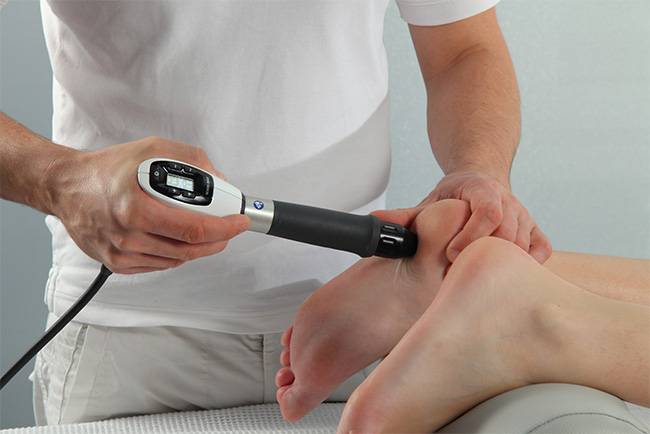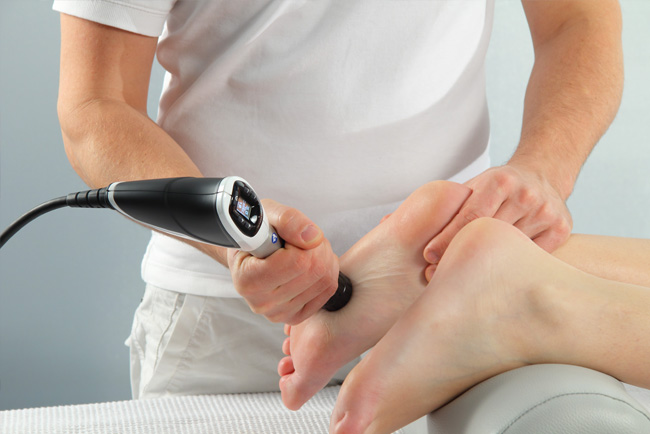Call Us Today!
(305) 949-4189


Dr. Merrick Horn is an expert at performing EPAT/shockwave treatment, a non surgical therapy that helps to eliminate pain and restore mobility, thus quickly improving patients’ quality of life. This innovative therapy is used by top athletes and athletic trainers to facilitate healing and decrease recovery time.
EPAT can successfully treat acute and chronic pain such as: Heel Pain, *Plantar Fasciitis, Tendinitis, Foot Pain, Ankle Pain, Calf Pain, Joint Pain, Stress fractures and to address many other painful conditions and sports injuries.
EPAT, also known as Shockwave, is one of the most advanced and highly effective noninvasive treatment methods cleared by the FDA. This proprietary technology is based on a unique set of pressure waves that are introduced into the painful areas of the body, stimulating the metabolism, enhancing blood circulation and accelerating the healing process to regenerate damaged tissue.

Q: What is EPAT / Shockwave Technology?
EPAT is a non-invasive modern and highly effective treatment method: high-energy sound waves are introduced into the painful areas of the body. Pressure wave technology accelerates the healing process in the body by stimulating the metabolism and enhancing blood circulation to regenerate damaged tissue. Strong energy pulses are applied to the affected area. These pulses occur for short periods of time. The force created penetrates tissue and stimulates cells in the body that are responsible for connective tissue and healing.
Q: What type of conditions can be treated with EPAT Technology?
EPAT treatment can successfully address acute and chronic pain such as: Heel Pain, Plantar Fasciitis, Tendinitis, Foot Pain, Ankle Pain, Calf Pain, Joint Pain, Stress fractures and to address sports injuries and many painful conditions.

Q: How is the treatment performed and is there pain?
EPAT treatment is noninvasive. Gel is applied to the treatment area; pressure waves are then released through the applicator as it is moved over the treatment area. There may be mild sensation with the treatment, but Dr. Merrick Horn will adjust the intensity to make the procedure comfortable.
Q: How many treatments are generally needed?
4-6 treatment sessions are usually recommended; however it depends on the condition that is being treated. Each treatment session takes between 7-15 minutes and can vary depending on the condition that is being treated.
Q: What type of results are expected with EPAT / Shockwave?
Beneficial effects are often experienced after only 3 or 4 treatments and there is no downtime. Many patients report immediate pain relief after treatment. EPAT has an 85% success rate as per clinical studies, patients treated report significant reduction in pain.
Q: What are the possible side effects of EPAT / Shockwave?
Treatment with EPAT technology has virtually no side effects. In some cases, patients may experience minor discomfort for a few days. Patients can return to work after treatments and in most all cases there is no down time.
Q: Who is a candidate for EPAT / Shockwave?
Most people are good candidates for EPAT treatment however patients who are pregnant, have a pacemaker or current cancer are not suitable for treatment with EPAT Technology.
Q: What is the Cost of EPAT / Shockwave?
Prices begin at $100 per site.
